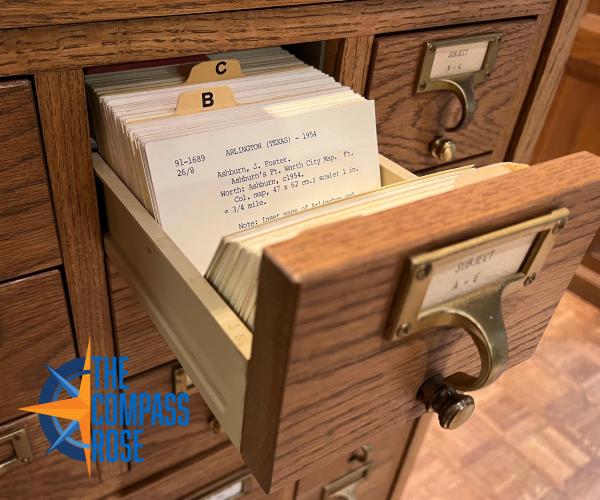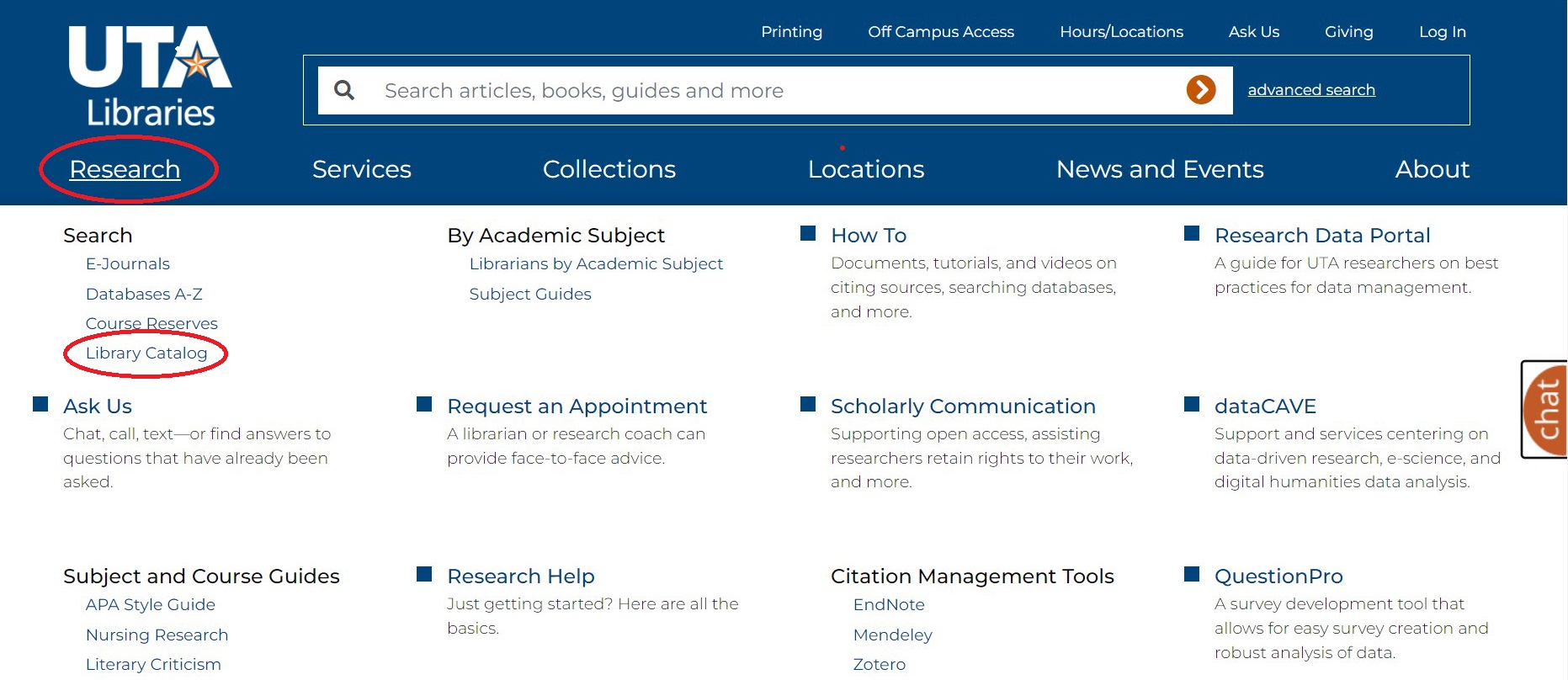
How to Find Special Collections Materials in the Library Catalog
Related Topics
The purpose of The Compass Rose is to raise awareness of Special Collections' resources and to foster the use of these resources. The blog series also reports significant new programs, initiatives, and acquisitions of Special Collections.
This blog post kicks off the first in a "How To" series focused on using online resources to find Special Collections material. This post was written by former UTA Libraries Metadata Librarian Stephanie Luke.
One of the resources at UTA Libraries that can assist users in discovering materials is the library catalog. A catalog is a database that lists the items held within a library. Online library catalogs that we use today developed from library card catalogs. Card catalogs contained cards with different descriptive information about a particular resource. For example, a card for a book will have the title, author, and subjects related to that particular book. The purpose of these card catalogs was to help make library materials accessible. Over time, Librarians began to create online versions of their catalogs to increase access by giving users the ability to search easily from anywhere. You can use the library catalog to search for a variety of library resources, including Special Collections and archival materials.
So how do you search the UTA Libraries online catalog? From the main page of the Libraries’ website, hover your cursor over “Research.” On the left side of the options under “Search,” choose “Library Catalog” (see Figure 1).

Figure 1. Accessing the catalog from the main page of UTA Libraries.
You will be redirected to our library catalog (see Figure 2). The main search function is a keyword search of all records. To narrow down your results, you should click “Options” in the right side of the search box.

Figure 2. The main search page of the library catalog.
After pressing “Options” on the basic search page (Figure 2), you will be redirected to a search page that offers more search options (see Figure 3). The topmost field is a drop-down followed by a search bar. To search all fields of the catalog, keep the selection “All Fields.” Other drop-down options include Author, Title, Publisher, Subject Terms, etc. Choosing one of these selections (rather than “All Fields”) will narrow down the search results. You may also add more fields to the search query. To do this, click the plus sign to the right of the search bar. This will add another search field that can be used to find more specific results.
Figure 3. Extended search option page.
You can also limit searches by date of publication (See Figure 4). Dates are expressed as MM/DD/YYYY and can be entered a date range.

Figure 4. Narrow results by entering a range of dates.
Another way to narrow results would be to include more search criteria (see Figure 5). In the “Content type” box, you can choose from options like Archival Material, Book/eBook, Map, Microfilm, etc. If you are unsure what you are looking for, keep the selection default “Any Type.” If you are looking for a resource in a specific language, you can select one or multiple choices in the “Language” box.

Figure 5. Selectable search boxes for Content type (top left), Discipline (top center), and Language (top right), as well as narrowing (bottom left) and exclusion commands (bottom right).
Results for your search will redirect you to a list of returns (see Figure 6). The default sort order for the results is relevance, but this can be changed at the top of the results page. Click the dropdown menu that follows “Sorted by” at the top of the page. The returns can be sorted by Relevance, Date (newest), Date (oldest), Author, or Title.
Figure 6. Results page for a catalog search. In the top right of the results screen, users can choose to sort the results a number of ways.
If you are not sure what kind of materials you want, search options like Publication Date, Content Type, and Language can also be selected on the results page. Limiting criteria are on the left side bar. In addition to those previously mentioned, you can choose to narrow down results by selecting a “Library Location” (See Figure 7). This option is also available on the left side of the results page. To look at only materials in our Special Collections, type in “special collections” and you will get several results that start with "Special Collections (6th floor Central Library)." If you mouse over the results you can see the location specified further. For example, it might specify "Special Collections (6th floor Central Library) Map Room Annex." This tells you where it is located in Special Collections, which can help the archivists and librarians find the materials for you.
Figure 7. To include just materials in UTA Special Collections, use the Library Location dropdown on the left side of the search results page. Click locations with special collections to exclude other collections.
Have you searched the catalog and still need help? The librarians and archivists at UTA Special Collections are always willing to assist! Email spcoref@uta.edu to contact the department. Do you want to learn about other tools to help you discover Special Collections materials? Posts highlighting the UTA Digital Gallery, TARO (Texas Archival Resources Online), and Wikipedia will soon be published on The Compass Rose blog.

Add new comment